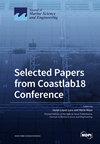基于改进型 YOLOv8 的雾天近海船舶探测技术
IF 2.8
3区 地球科学
Q1 ENGINEERING, MARINE
引用次数: 0
摘要
近海水域的船舶目标探测和监视不仅是提高船舶智能的关键技术,而且对沿海地区的安全和经济发展具有重要意义。然而,由于雾天能见度低,雾天沿岸水域的船舶探测效果有限。在本文中,我们提出了 YOLOv8s 的改进版本,称为 YOLOv8s-Fog,它提供了一种专为大雾天气近岸场景设计的多目标检测网络。这一改进包括在 YOLOv8 的颈部添加坐标注意,并用可变形卷积取代 C2f 中的卷积。此外,为了扩展数据集,我们利用大气散射模型和单目深度估算,构建并合成了一组在不同雾度的沿海水域拍摄的船舶目标图像。我们将改进后的模型与标准 YOLOv8s 模型以及其他几种目标检测模型进行了比较。结果表明改进后的模型性能优越,平均准确率达到 74.4% (mAP@0.5),比标准 YOLOv8s 模型高出 1.2%。本文章由计算机程序翻译,如有差异,请以英文原文为准。
Offshore Ship Detection in Foggy Weather Based on Improved YOLOv8
The detection and surveillance of ship targets in coastal waters is not only a crucial technology for the advancement of ship intelligence, but also holds great significance for the safety and economic development of coastal areas. However, due to poor visibility in foggy conditions, the effectiveness of ship detection in coastal waters during foggy weather is limited. In this paper, we propose an improved version of YOLOv8s, termed YOLOv8s-Fog, which provides a multi-target detection network specifically designed for nearshore scenes in foggy weather. This improvement involves adding coordinate attention to the neck of YOLOv8 and replacing the convolution in C2f with deformable convolution. Additionally, to expand the dataset, we construct and synthesize a collection of ship target images captured in coastal waters on days with varying degrees of fog, using the atmospheric scattering model and monocular depth estimation. We compare the improved model with the standard YOLOv8s model, as well as several other object detection models. The results demonstrate superior performance achieved by the improved model, achieving an average accuracy of 74.4% (mAP@0.5), which is 1.2% higher than that achieved by the standard YOLOv8s model.
求助全文
通过发布文献求助,成功后即可免费获取论文全文。
去求助
来源期刊

Journal of Marine Science and Engineering
Engineering-Ocean Engineering
CiteScore
4.40
自引率
20.70%
发文量
1640
审稿时长
18.09 days
期刊介绍:
Journal of Marine Science and Engineering (JMSE; ISSN 2077-1312) is an international, peer-reviewed open access journal which provides an advanced forum for studies related to marine science and engineering. It publishes reviews, research papers and communications. Our aim is to encourage scientists to publish their experimental and theoretical results in as much detail as possible. There is no restriction on the length of the papers. The full experimental details must be provided so that the results can be reproduced. Electronic files and software regarding the full details of the calculation or experimental procedure, if unable to be published in a normal way, can be deposited as supplementary electronic material.
 求助内容:
求助内容: 应助结果提醒方式:
应助结果提醒方式:


